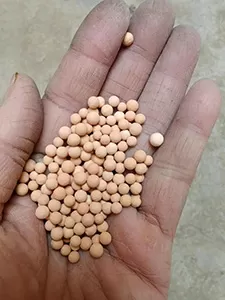Carbon molecular sieve production begins with selecting raw materials, typically coal, coconut shells, or petroleum coke, chosen for their high carbon content. These materials undergo crushing and grinding to achieve a uniform particle size, ensuring consistent processing in subsequent stages.

The next step is carbonization, where the raw materials are heated in an inert atmosphere (usually nitrogen) at temperatures between 600–900°C. This process removes volatile components, leaving a porous carbon structure—the foundation of the molecular sieve’s adsorption capabilities.
Activation follows, involving exposure to oxidizing gases like steam or carbon dioxide at 800–1000°C. This expands the pore network, increasing surface area and enhancing the material’s ability to trap molecules. Precise control of temperature and gas flow is critical to avoid over-activation, which could damage the sieve’s structure.
Pore adjustment is the final key stage. By depositing carbon on the inner pore walls through controlled pyrolysis of hydrocarbons, manufacturers tailor the pore size to 0.3–0.5 nm—optimal for separating nitrogen and oxygen. This step ensures the molecular sieve’s selectivity, a defining feature for its use in PSA nitrogen generators.
The finished carbon molecular sieve is then shaped into granules or pellets suitable for packing in industrial columns, ready for applications in gas separation and purification. Each step in the process is fine-tuned to balance porosity, strength, and adsorption efficiency, ensuring high-performance molecular sieve products.

